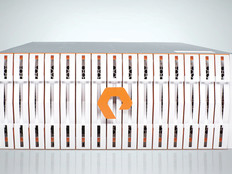What Are Hybrid Clouds and What is Their Role in Higher Education?
IT departments in higher education as well as in other industries are experiencing a slow deterioration of their hardware while the demand for computing resources continues to grow. For institutions that need to bridge the gap between existing infrastructure and the infrastructure they need to grow, hybrid cloud infrastructure as a service (IaaS) presents a unique option.
Definitions vary, but hybrid clouds refer to connections made by existing data centers to public or private clouds using a network connection, which makes provisioning extra resources fast and easy. Hybrid models are especially useful when a university needs to prepare for resource-intensive course registration or backup the previous year’s data on a storage array.
The Tight-Budget Antidote
As pinched budgets and real concerns over IP protection constrain IT, cloud adoption has sometimes lagged. Many institutions may have moved productivity applications or backup files to the cloud, but in the absence of a larger policy, some academic departments — especially those who need to access resources quickly or unevenly — may have self-provisioned their own environments for specific classes or projects. While a self-service model certainly takes some management pressure off, this flexibility does not come without concerns about data security, especially in the public cloud.
In these cases, a hybrid cloud model can do more than just extend infrastructure beyond the traditional server boundary. Unlike stand-alone clouds, hybrid clouds offer opportunities for consolidation. For example, central IT departments that can implement a pathway from existing infrastructure to a more elastic cloud infrastructure can also control how these environments are accessed (exclusively through VPN tunnel, for instance), select a cloud provider that has security practices and service level agreements (SLAs) they are comfortable with, and deploy some level of backup or monitoring, if needed.
Flexible, Scalable, Capable
Rather than constricting what departmental and academic users like about on-demand, self-service public clouds, provide the same flexibility in provisioning and the same ability in scaling up or down They also provide an improved service layer, like uptime guarantees that are consistent with existing internal SLAs.
For schools that are already using or are considering IaaS, or for those that are concerned about the prospect of lobbying for a major increase to the budget to update or expand existing resources, hybrid clouds are an a way to keep control of on-premises data centers, ensure compliance with best practices and stretch existing capital allocations, while still serving the campus population with a dynamic, scalable resource.








